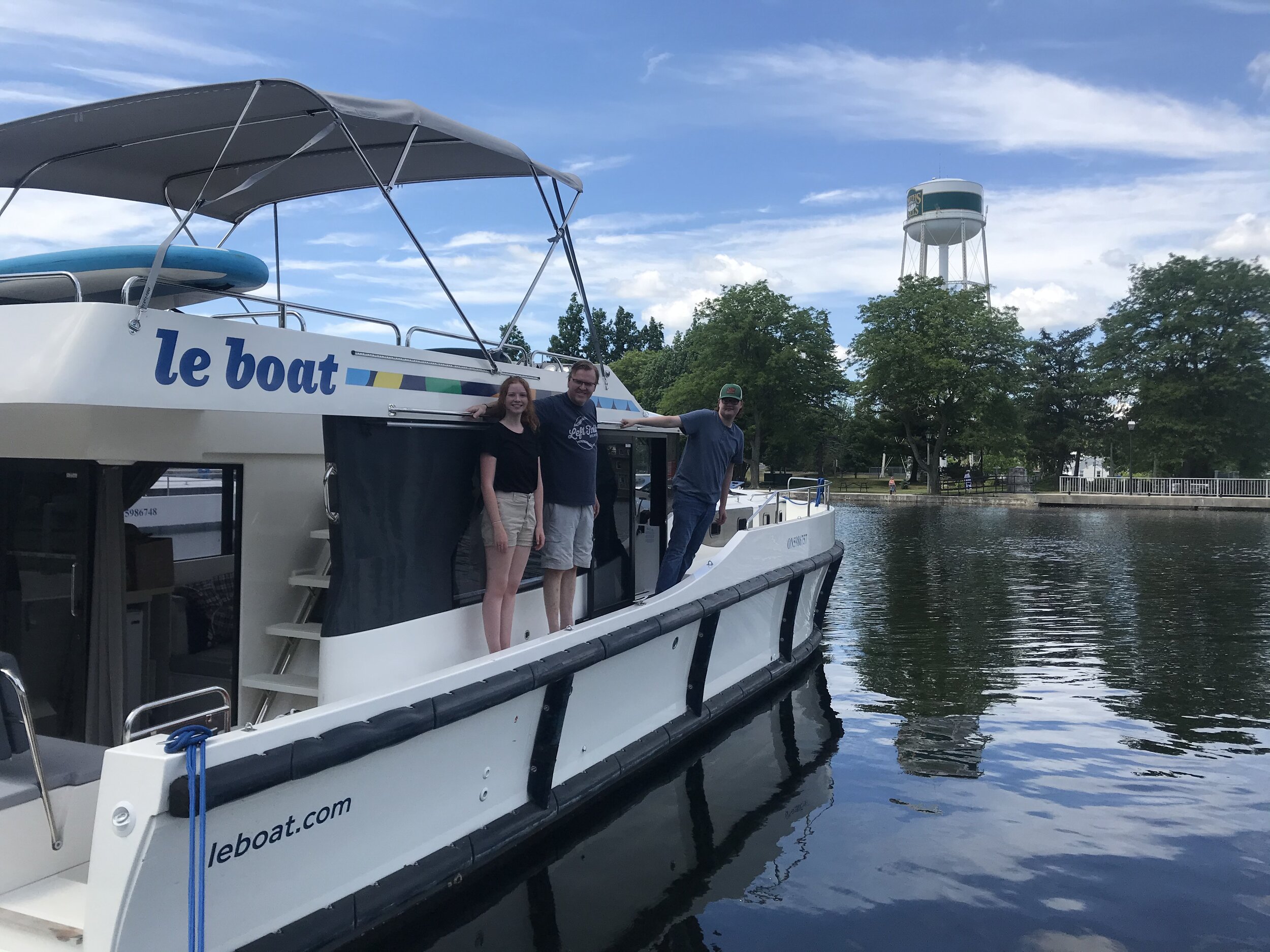Modern Travel - Le Fun on Le Boat: Cruising the Rideau Canal
/“Are you sure we don’t need a license to operate this?” was the first question that popped into my head when I set eyes on Le Boat. This luxury 42-foot houseboat, complete with four bedrooms, four bathrooms, spacious kitchen/living quarters and a large top deck, looked even bigger in person than it did online.
Were we really going to navigate it through the Rideau Canal by ourselves?
Most definitely.







Though a little apprehensive, we were mostly excited at the prospect of travelling again. Self-contained and in our backyard (which is, of course, the naturally-gifted province of Ontario), house boating was an ideal first excursion, as COVID-quarantine restrictions loosened. But first we had to learn how to pilot the Horizon 5.
“You’re always learning from the moment you get on until the moment you leave,” said Sandy Crothers, Le Boat’s base manager, who was showing us the ropes. And there were actual ropes to learn about as well as engine thrust controls, anchor, cooling systems, water tanks, safety guidelines and navigational maps.
The charts would be essential for us to plan our travels. Considering how close the Rideau Canal is to Mississauga (approximately three hours), I’m embarrassed to admit that I had no idea how big this waterway was. Ontario’s only World Heritage Site, this freshwater highway stretched 202km from Lake Ontario to Ottawa, connecting a series of rivers and lakes with 52 dams and 47 locks. Although it was narrow in some parts, elsewhere it opened into large, deep blue, glacially-sculpted lakes with rocky shores surrounded by forests alive with birds, fish and other wildlife.
But in order to reach that cottage-country nirvana, we had to get through the locks. Sandy stayed on board for the first one in Smith Falls, where Le Boat was stationed. It was our final test before he handed over the keys. The locks, which functioned as watery elevators that raised and lowered boats between different levels, were not only nautical lessons but a lesson in Canadian history. Fearful of another American attack after the War of 1812, Canada (as part of the British Empire) wanted to deter a possible invasion by creating another supply route. Construction began in 1826, when thousands of labourers, under difficult conditions, worked on the canal until its completion in 1832. In was an engineering marvel of its time. Incredibly, much of the original technology is used today; and during our time on the canal, we watched in fascination as lockmasters used their muscle power to crank open the gates with traditional hand winches, known as crabs.





However, at our first lock, we weren’t marvelling at this feat of engineering, but concentrating on not damaging the boat or ourselves. The most important step was to secure ropes on the lines, so the boat stayed still, which our teens accomplished like true skippers. We bade farewell to Sandy, and we were off! Slowly, since houseboat speed was a maximum of 10km/hr, which felt like just the right pace on a warm, summer’s afternoon.
Our first mooring was at Beveridges, which like all the lock stations, were run by Parks Canada. Almost all had shore power as well as facilities like picnic tables, fire pits and BBQs. While the kids and their dad tried their luck with fishing, I tried out the paddle board (a rental-equipment options available on Le Boat) for a peaceful ride on the Lower Rideau Lake.
The next morning, we cruised three hours to West Port and took advantage of the bicycles on board to explore the small village. We planned to bike up to the Foley Mountain Conservation Area, but with hotter-than-normal temps we opted for ice cream and a swim at Sand Lake Beach instead. Dinner was a special treat at Scheuermann Winery, where we indulged in their wood-oven pizza and sipped wines with a view of vineyards.
The next day we set off, looking for a quiet place with good swimming and fishing. Not knowing the area, we asked for recommendations from the Parks Canada staff at the next lock. Without fail, every lockmaster we met was friendly and helpful, and this time was no exception. We were directed to a fantastic spot on Clear Lake, where we spent a relaxing afternoon on the boat, before mooring at Davis Lock, one of the most isolated and peaceful lockstations on the canal.










The rhythm of house boating on the Rideau Canal had now seduced us. Each lock station had its own character, and each stop had its own charm. Jones Fall revealed the breadth of the canal’s history with its massive stone arch dam (and the kids finally caught their fish!). Newboro was a nature hotspot, where we witnessed the grace of a blue heron and saw turtles lay their eggs in the ground.
The pace was slow, but the five days flew by; and cruising back to Smith Falls, we lamented about the places we didn’t get a chance to see. Plans took shape for a future trip on the Rideau Canal.
Mmmm, maybe we should get our boater’s license…
About Le Boat: A provider of boating vacations in Europe for the last 50 years, its fleets cruise the lakes, rivers and canals of the UK, France, Germany, Netherlands and Italy. Le Boat started operating on the Rideau Canal in 2018.













